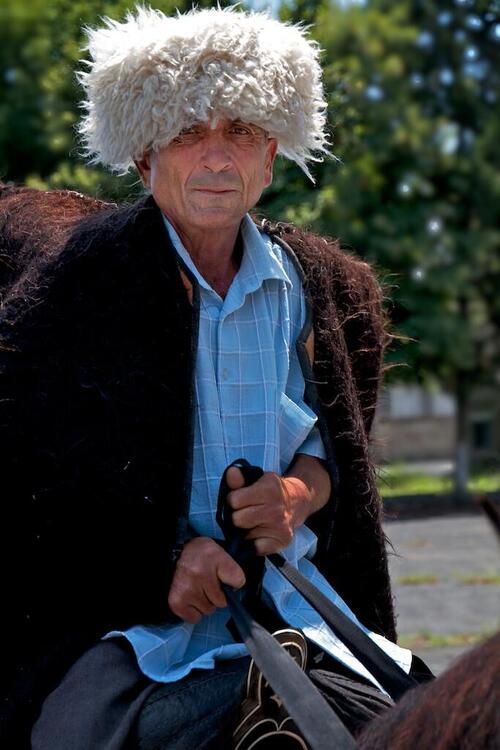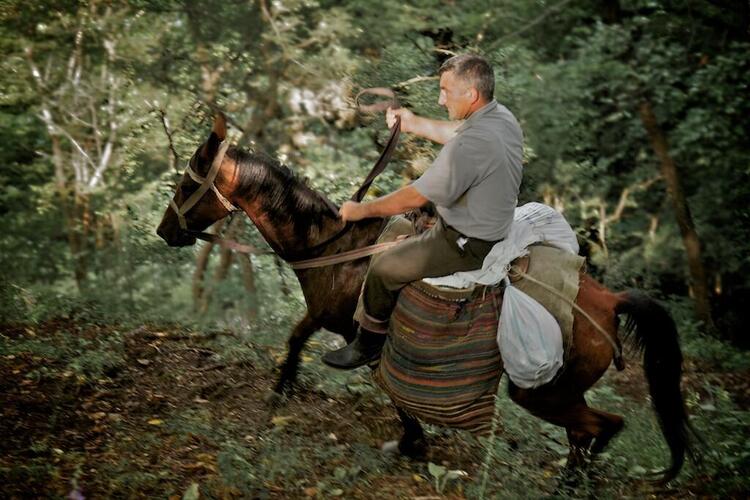
From earliest times, the way of life of the Tsakhur has been intrinsically tied to the geography of the Caucasus, both the mountains and the plains lying in their shadow. For thousands of years, the Tsakhur lived in harmony wtth the snowcapped peaks, wild, rushing rivers, and fertile green fields that surrounded them. All of this has left an imprint on the character of the Tsakhur, helping them to coexist with nature - to love rather than fear it. The Tsakhur view themselves as a resilient people - like a mountain in winter; proud and quiet - like the ancient rocks ; hospitable - like summer pastures and fields of flowers; strong and agile - like mountain goats. This is how the epic 'Sharbili' describes the Tsakhur:
'His life he is prepared to give,
The silent and austere Tsakhur,
But gloriously his short sword's blade
A rich and noble speech brings forth/'
The mountains and plains have also formed the foundation for the economy of the Tsakhur. Long ago they established sheep herding as the backbone of their economy, linking the mountain pastures of Dagestan with the plains of Azerbaijan. Even dangerous mountain passes did not deter the shepherds, who drove their herds of sheep from their summer alpine pastures in Dagestan to plains of the Kura- Alazahskaya Valley, where their winter pastures were located. Over the past 60-70 years, several high mountain Tsakhur village communities in Azerbaijan relocated to the Alazahskaya Valley where the land was rich with sumptuous gardens and vineyards. However, even today many Tsakhur spend their summers high in the mountains where they can relax in their place of birth, breathe the cool mountain air of the Caucasus, and spend time with their elders who did not want to move to the plains.
